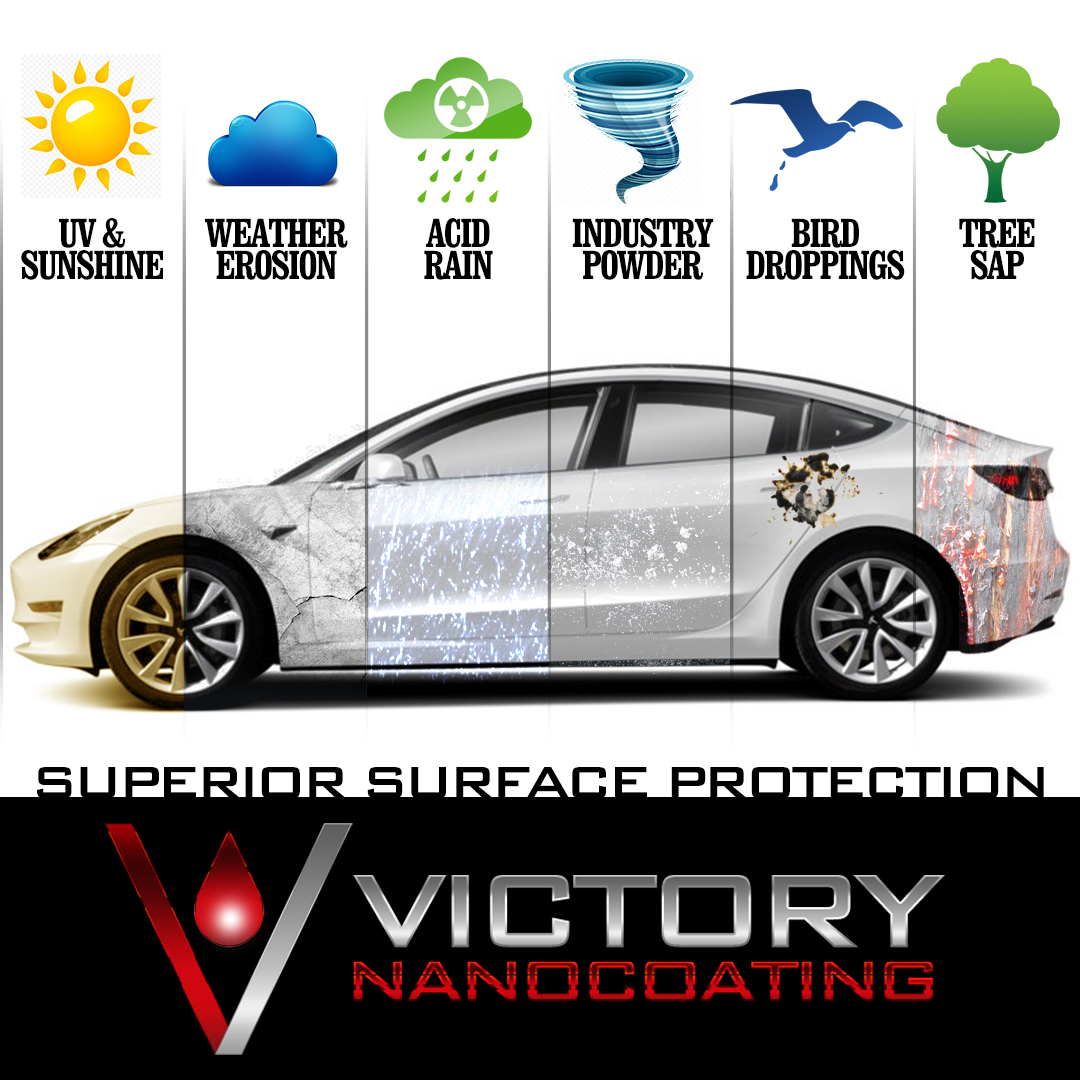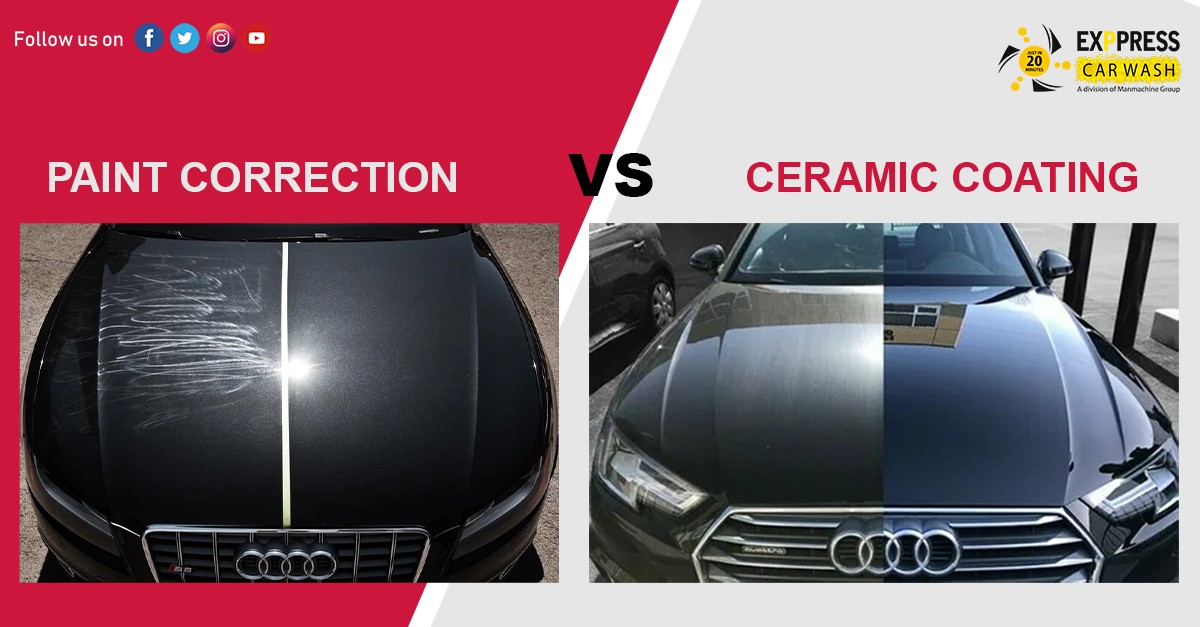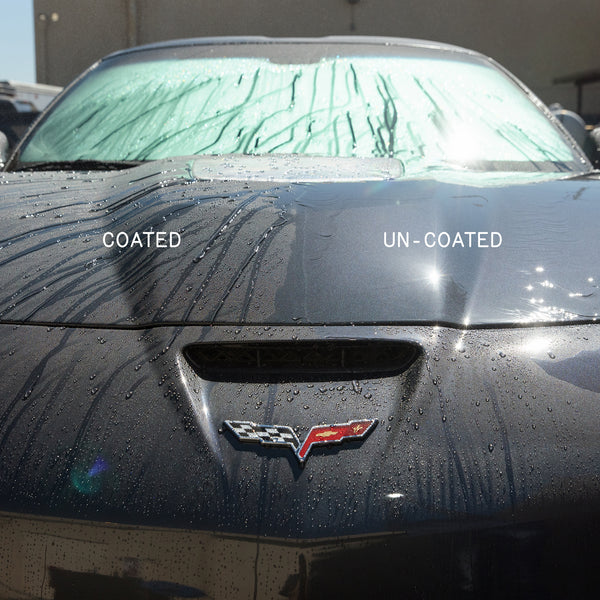Why Ceramic Coating Is Vital for Maintaining Your Automobile Looking New
Wiki Article
Discovering the Scientific Research Behind Ceramic Finishing and Its Influence On Automobile Outlining
The application of ceramic coating in car describing stands for a substantial development in automobile treatment, rooted in its advanced chemical residential or commercial properties, mostly silica dioxide and titanium dioxide. Understanding the science behind these products discloses not only the safety advantages they use but likewise their duty in enhancing a lorry's aesthetic longevity. As we explore the complexities of the application procedure and the lasting implications for lorry maintenance, it comes to be clear that the choice of ceramic finish can basically change one's approach to automobile care. What considerations should be made before devoting to this transformative solution?What Is Ceramic Covering?
Ceramic covering is a modern-day remedy that has actually gotten appeal in the vehicle detailing sector for its capability to supply durable protection for car surfaces. This advanced protective layer is usually composed of silica dioxide (SiO2), which forms a strong bond with the lorry's paint, producing a sturdy guard against ecological pollutants. Unlike typical wax or sealants, ceramic coverings use superior resistance to UV rays, chemical spots, and physical abrasions.
The application of ceramic layer entails a careful process, where the lorry's surface area is completely cleaned and sanitized before the coating is applied (Ceramic Coating). Once treated, the coating improves the car's gloss, deepness, and quality, providing a showroom-quality coating that lasts for many years. Among the key advantages of ceramic covering is its hydrophobic buildings, which push back water and dust, making upkeep less complicated and lowering the regularity of washes
The Chemistry of Ceramic Finish
A fundamental aspect of ceramic coating depends on its chemical composition, mainly characterized by the existence of silica dioxide (SiO2) This compound is integral to the development of a sturdy, safety layer that bonds chemically to the lorry's surface area. When used, the SiO2 particles go through a process called polymerization, in which they form a network of interconnected frameworks. This results in a robust, hydrophobic surface area that drives away water and impurities.Along with SiO2, lots of ceramic finishings incorporate titanium dioxide (TiO2) and various other additives to improve their performance qualities. TiO2, for instance, adds to boosted hardness and chemical resistance. The interaction in between these compounds produces an unique molecular framework that offers a high level of defense against environmental elements such as UV rays, acid rainfall, and oxidation.
Moreover, the application procedure often entails a thorough preparation of the surface area to ensure optimal bond of the covering. This chemistry not only ensures a durable finish however also boosts the aesthetic allure of the lorry. Comprehending the intricate chemistry behind ceramic finishings is crucial for describing specialists who intend to provide exceptional security and durability for their clients' vehicles.
Benefits of Ceramic Finishing
While describing experts frequently highlight the benefits of ceramic finishings, their advantages prolong far beyond looks. Ceramic coatings develop a hydrophobic surface that repels water, dust, and crud, substantially lowering the regularity of washes and the effort called for to maintain a car's look.Moreover, ceramic layers boost the durability of the lorry's finish. Unlike typical waxes or sealants, which might last a few months, ceramic layers can sustain for several years, providing a long-term option for this page automobile care. This browse this site sturdiness translates to cost savings, as owners are less likely to need frequent reapplication.
Furthermore, ceramic finishes are immune to chemical spots and etching, which can happen from acidic compounds like bird droppings or tree sap. This resistance not only protects the car's aesthetic appeals but likewise reduces possible damages - Ceramic Coating. Generally, the investment in ceramic finishing uses auto proprietors a considerable return in terms of protection, ease of maintenance, and durable aesthetic charm, making it a progressively popular choice in the world of automobile detailing
Application Refine Described

When the surface is effectively prepared, the ceramic finish can be applied. It is generally carried out in a controlled setting, such as a garage or outlining bay, to avoid contamination from dirt and particles. Making use of an applicator pad, the professional uses the coating in little sections, working in a crosshatch pattern to make certain even protection. It is important to adhere to the manufacturer's directions pertaining to application thickness and healing times.
Once treated, the ceramic coating develops a solid bond with the paint, offering improved security and a glossy finish. Proper application is essential to make the most of the long life and efficiency of the ceramic finishing.

Long-term Effect On Automobile Treatment
The lasting impact of ceramic layer on lorry care is substantial, as it fundamentally changes how proprietors preserve their lorries. By developing a resilient, hydrophobic layer on the vehicle's surface area, ceramic coatings reduce the adherence of dirt, crud, and impurities. This home lowers the frequency of cleaning called for, eventually saving water and cleansing items.Furthermore, the UV defense offered by ceramic coatings aids to stop oxidation and fading of the car's paint, maintaining its visual charm and resale value with time - Ceramic Coating. This protective barrier likewise lowers the likelihood of scratches and swirl marks, which are typical concerns in typical paint surfaces
In addition, ceramic finishes facilitate much easier upkeep, allowing proprietors to clean their vehicles with very little effort. The smooth surface area makes it challenging for impurities to bond, allowing easier removal throughout routine cleaning.
In the future, the financial investment in ceramic layer may result in cost savings in lorry care services and products. On the whole, the enduring benefits of ceramic finishings not just enhance the look of cars however also contribute to an extra lasting and reliable method to lorry upkeep.
Verdict
In conclusion, the application of ceramic covering represents a considerable improvement in vehicle describing, driven by its special chemical composition of silica dioxide and titanium dioxide. This innovation not just boosts the aesthetic allure of vehicles however likewise provides durable protection against environmental threats and use. The long-term advantages, consisting of decreased upkeep frequency and boosted toughness, highlight the worth of ceramic finishes as a necessary financial investment for keeping car look and stability over time.
Report this wiki page